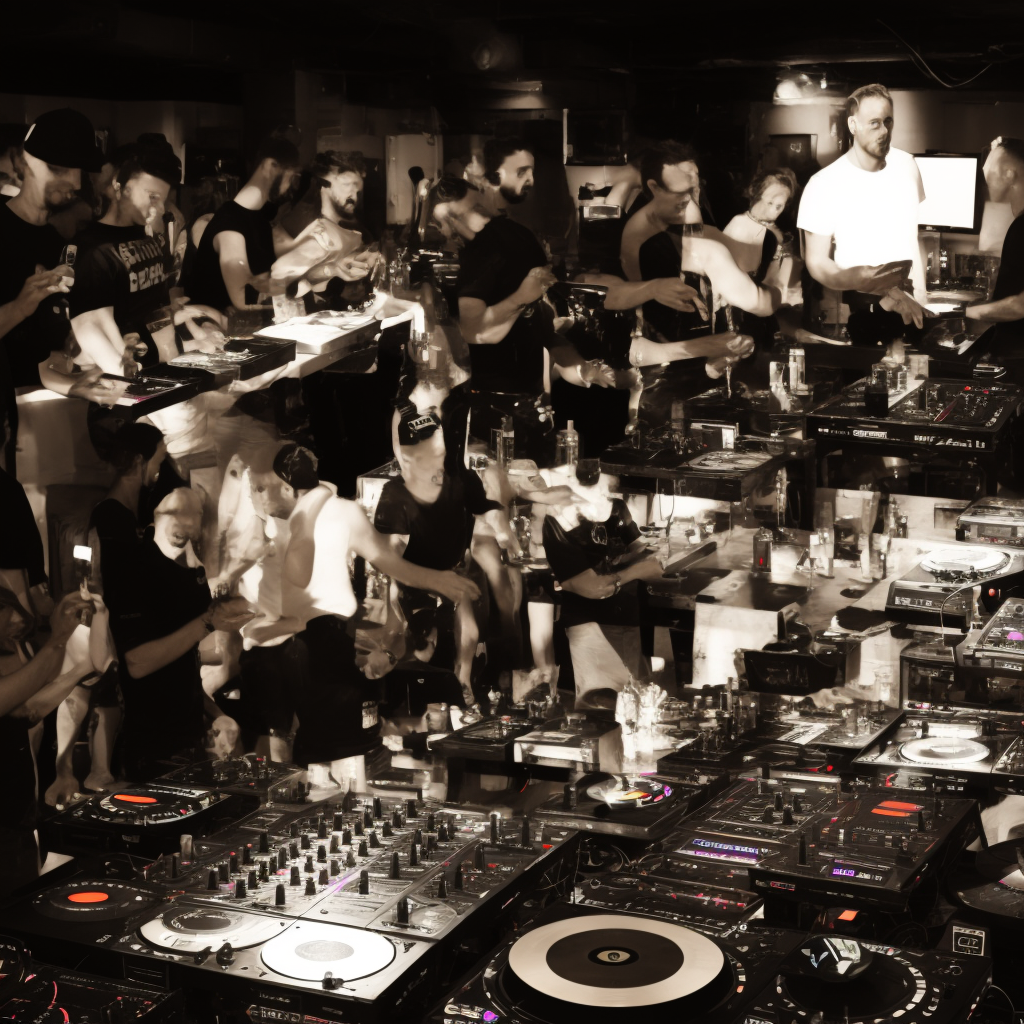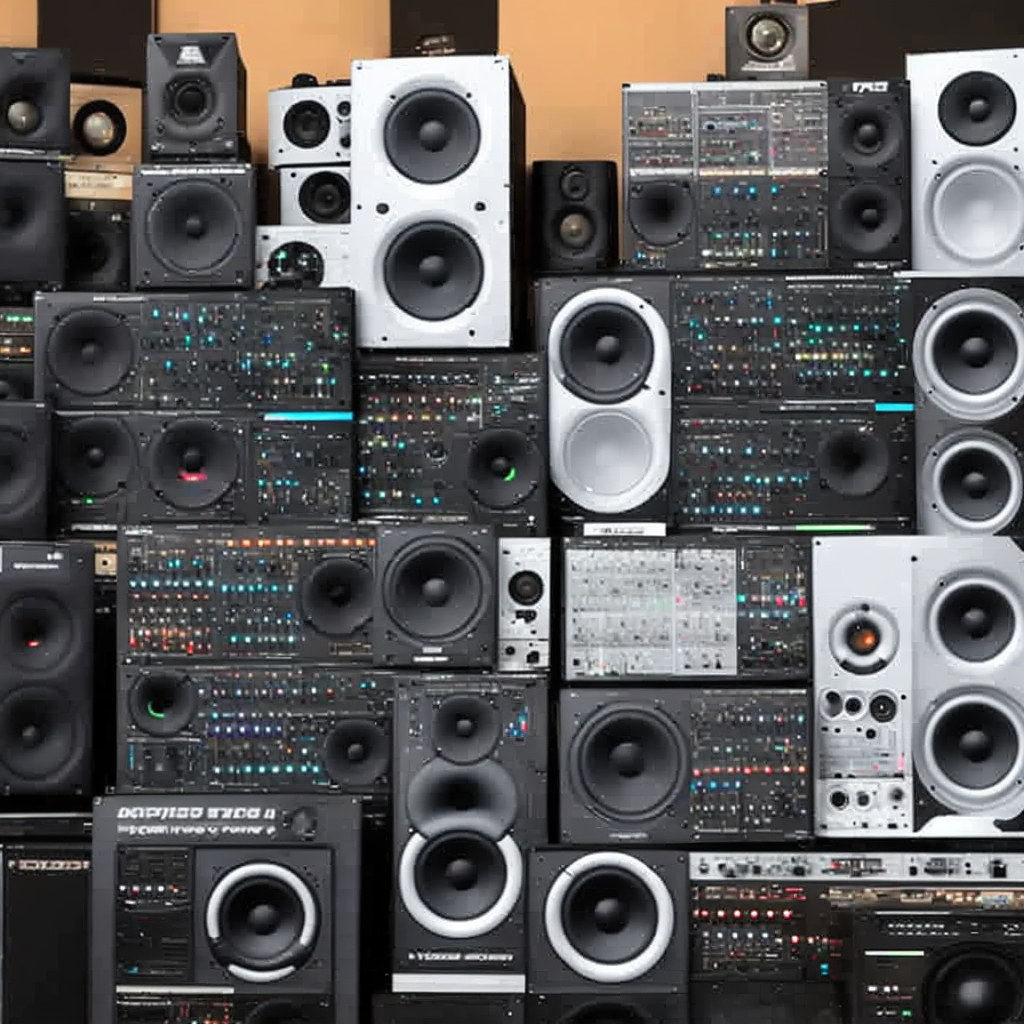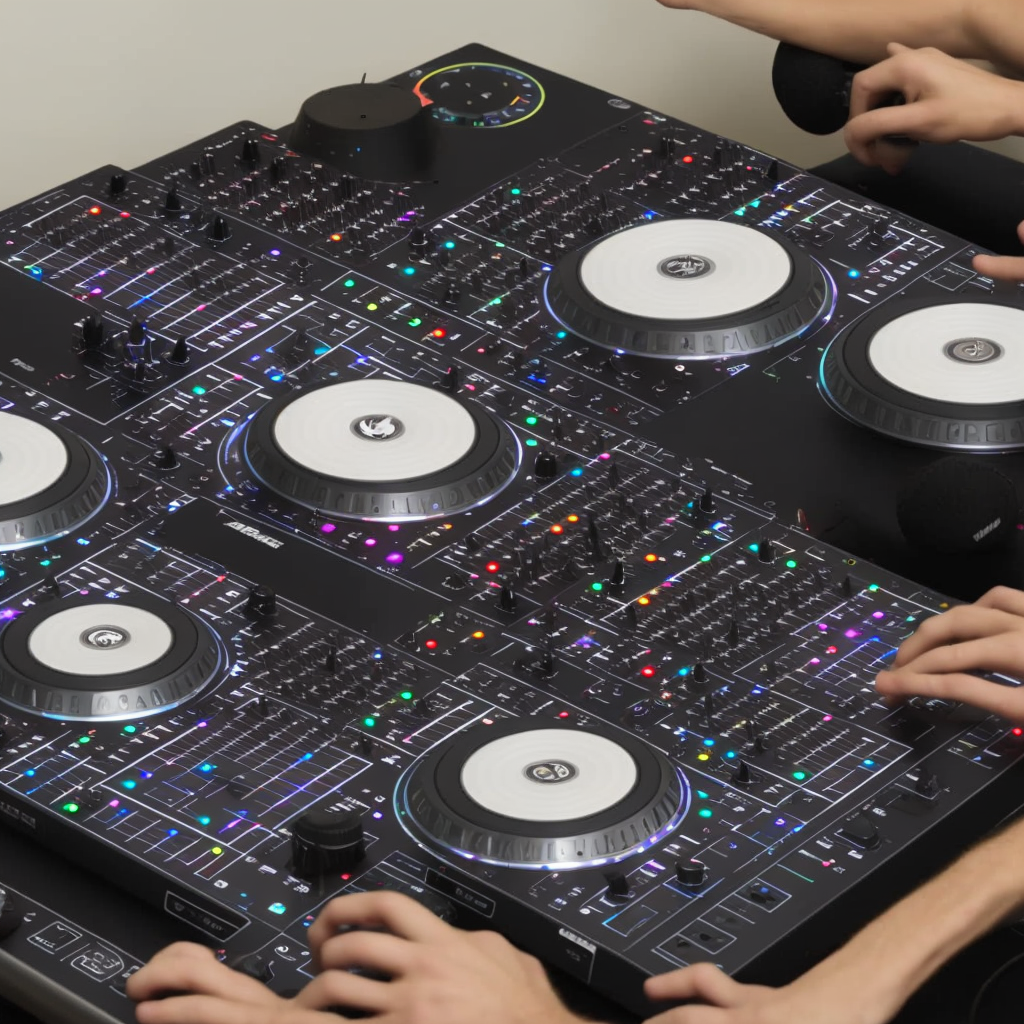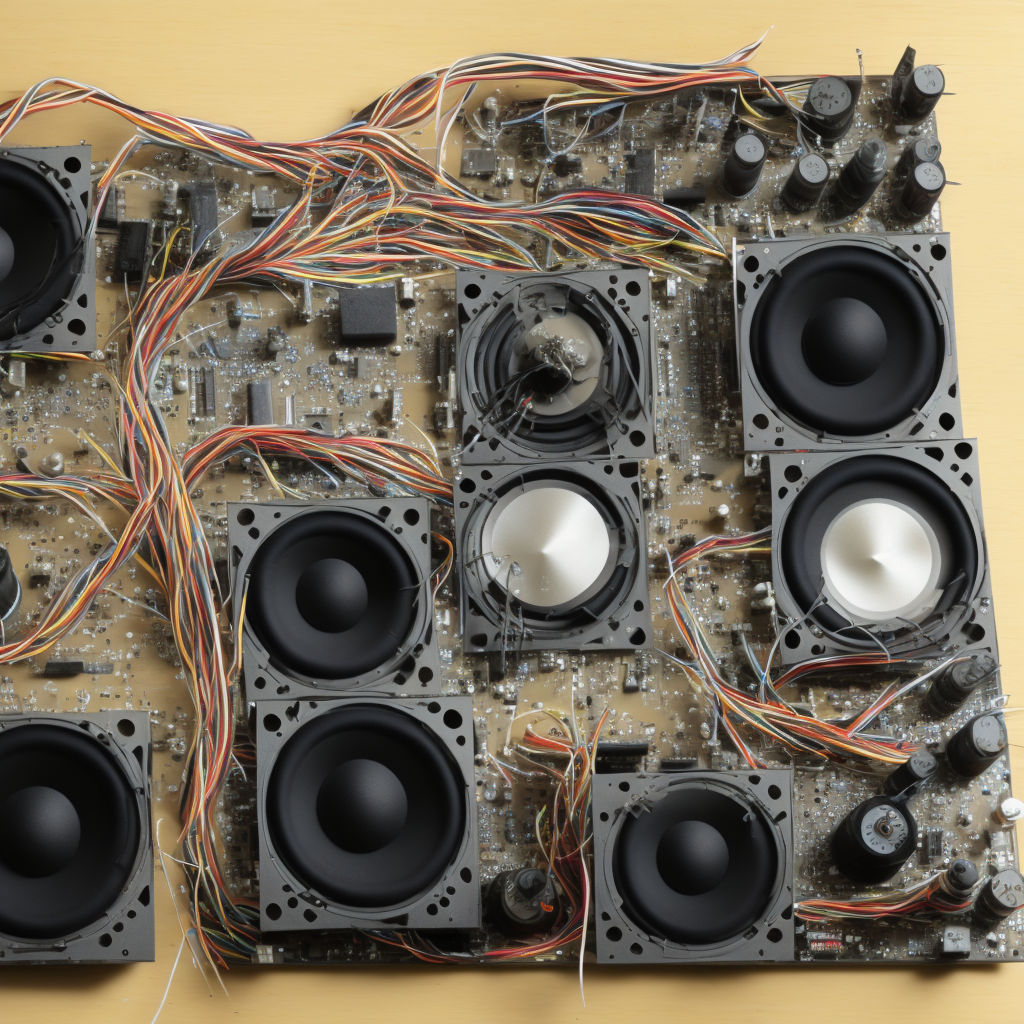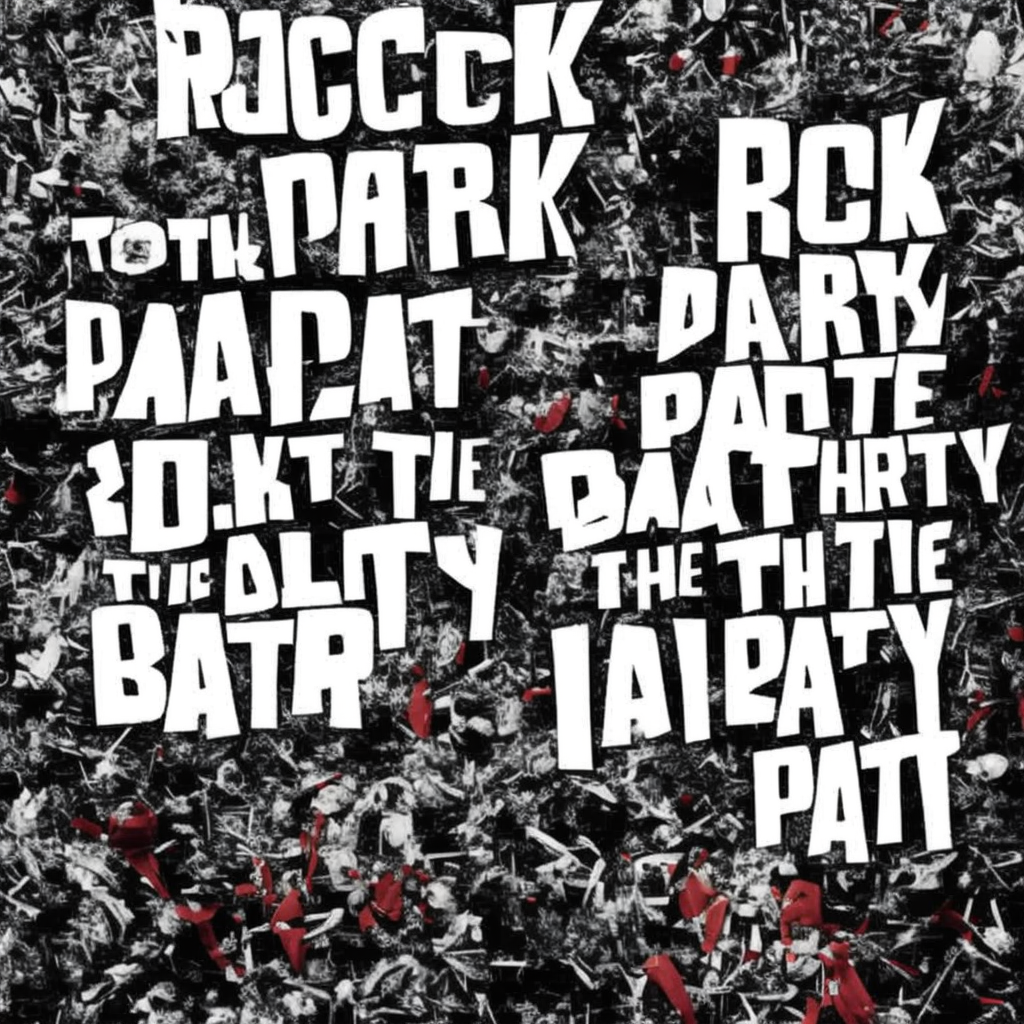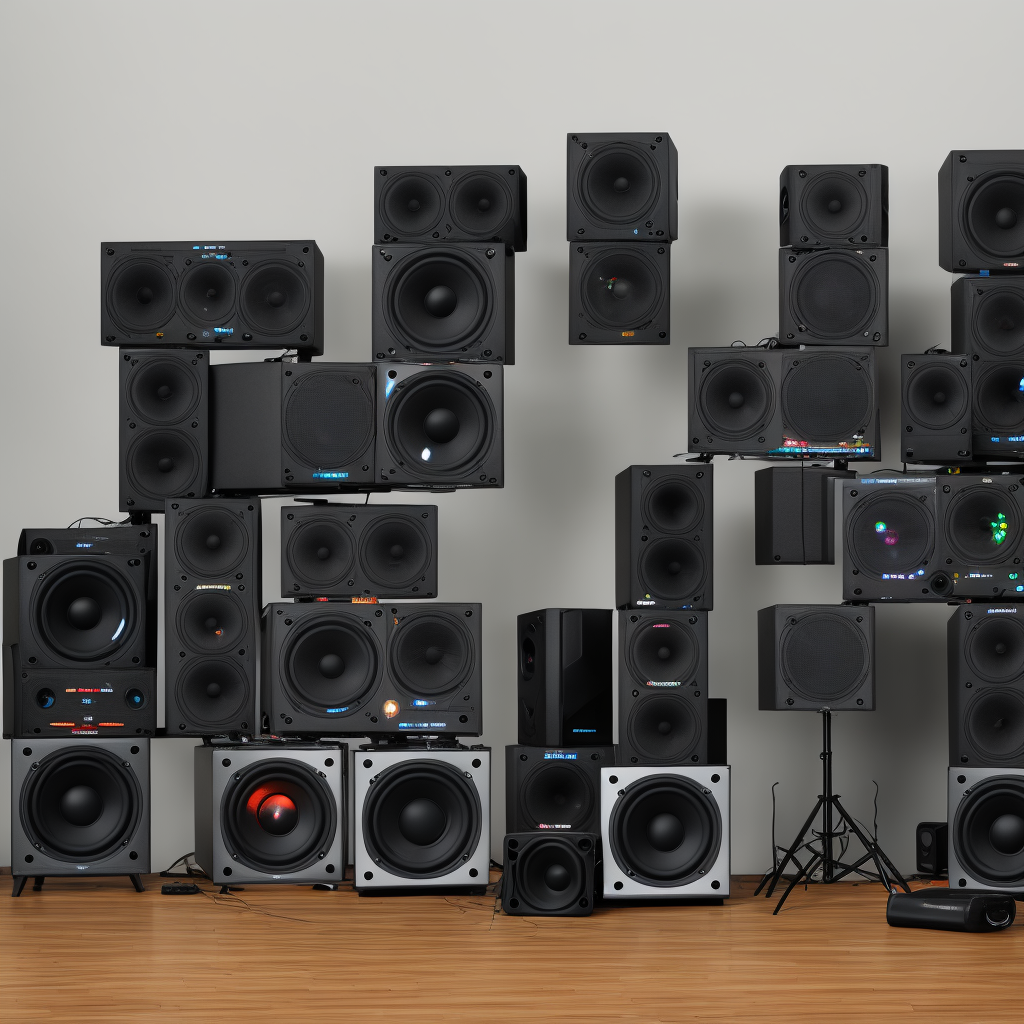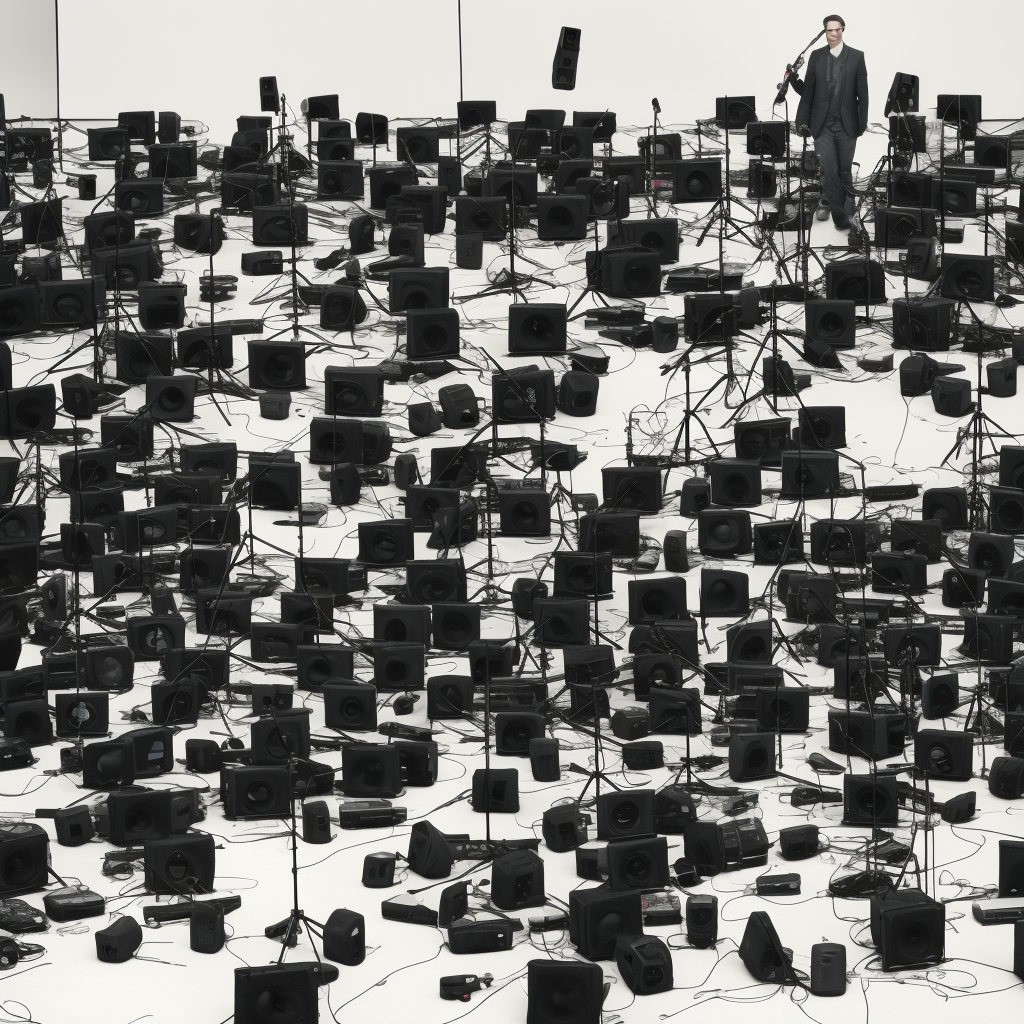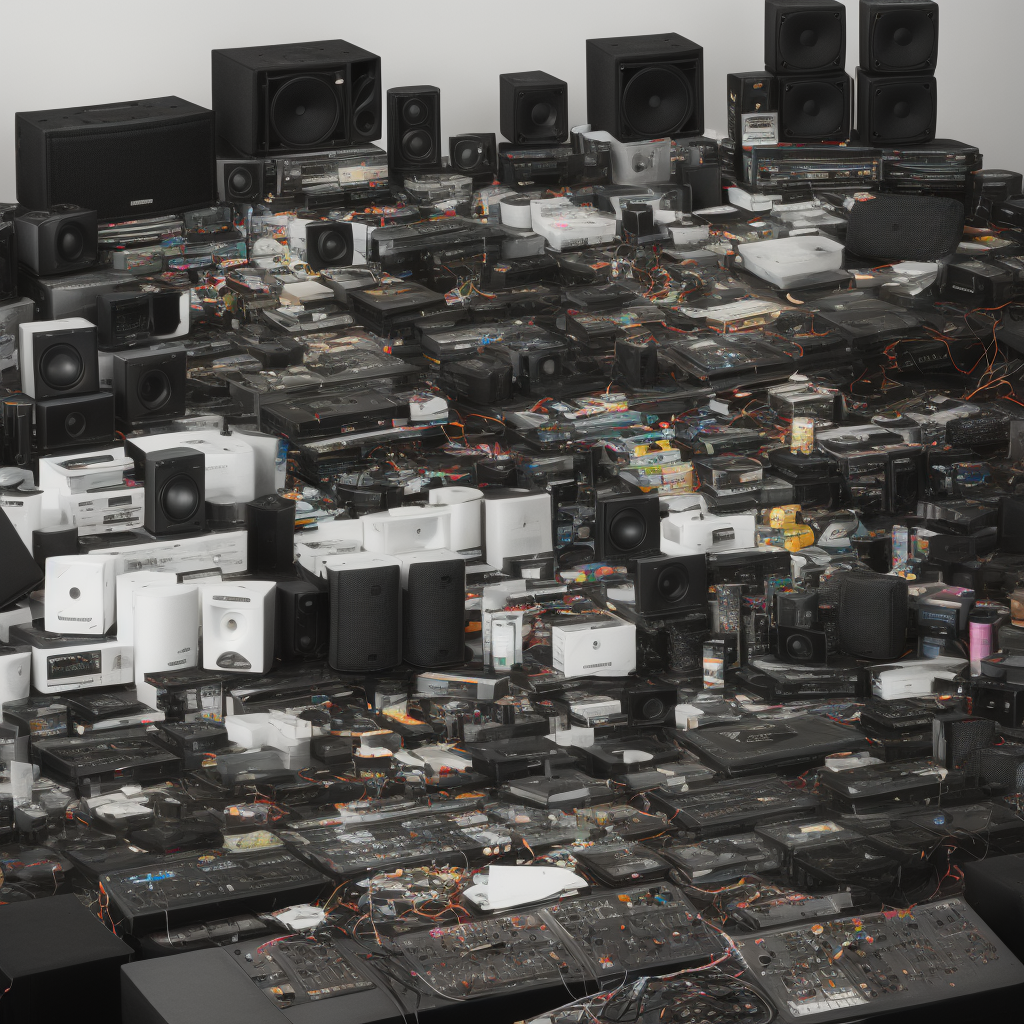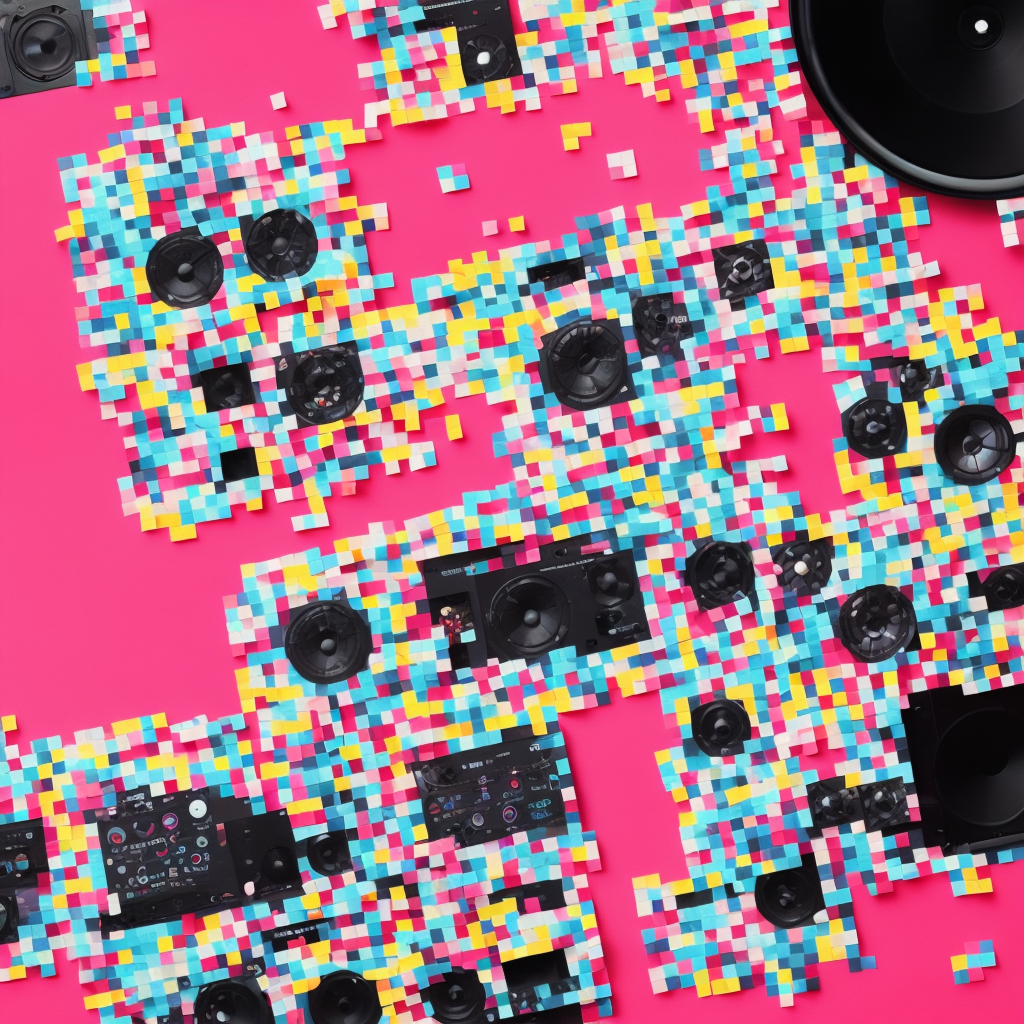Dust off your vinyl, sync up the soundboard, and get ready to drop the beat! Welcome to the pulsating realm of “Take Control of the Dancefloor: A Step-by-Step Guide to DJ with Party Speakers”. This enticing guide is your backstage pass to mastering the artistry of DJing, with a particular focus on party speakers. Whether you’re an amateur music aficionado curious about the art of DJing or a seasoned sound wizard wanting to optimize your skills, this article will take you on a rhythmic journey, breaking down the complexities of DJing with party speakers into manageable, beat-matching, crowd-pleasing steps. Get ready to embrace the magnetic energy of the dancefloor and leave your audience spellbound with your sonic prowess!
Understanding the Basics: The Art of DJing with Party Speakers
Every good DJ knows that the key to controlling the dance floor lies not only in their skillful mixing and song selection, but also in their understanding and mastery of the sound equipment they use. One of the essential tools in their arsenal is the loud and booming party speaker. Mastering the art of DJing with party speakers can elevate your performance, creating an immersive and unforgettable experience for your audience.
Firstly, it’s crucial to understand the basics about party speakers. They come in various types and sizes, each designed to deliver a unique sound experience. Subwoofers are known for their deep bass sounds, while full-range speakers can cover a broad spectrum of frequencies. Knowing how to use these speakers together in harmony can create a balanced and well-rounded sound. Furthermore, understanding the speaker’s power rating and impedance is key to preventing damage and ensuring optimal performance.
- Subwoofers: These are special loudspeakers that produce low-pitched audio frequencies, also known as bass.
- Full-range speakers: These are loudspeakers capable of covering the entire audio spectrum without the need for additional speakers.
- Power rating: This is the maximum power that a speaker can handle without causing damage.
- Impedance: This is a measure of how much a speaker resists the electrical current flowing through it.
Another crucial aspect is understanding the acoustics of the venue. The positioning and angling of your party speakers can drastically affect the sound’s distribution. Typically, speakers are placed on either side of the DJ booth, slightly angled towards the audience. However, in a larger venue, additional speakers might be required to ensure the sound reaches every corner. It’s also essential to consider the venue’s acoustic features, such as walls and ceilings, as they can cause echoes and distort the sound.
Lastly, the art of DJing with party speakers is about more than just technical knowledge. It’s about feeling the music and understanding your audience. Are they responding to the bass? Do they want more high frequencies? By paying attention to these details, you can adjust the sound from your speakers in real time, creating an atmosphere that keeps the crowd dancing all night long.
Exploring the Equipment: Choosing the Right Party Speakers for DJing
As a DJ, your speakers are your sonic paintbrush, used to craft an auditory tapestry that leaves your audience awestruck. The right party speakers can transform an ordinary gig into an electrifying, unforgettable experience. But with countless options available, how do you choose the right ones for your DJing needs?
First and foremost, consider the size of your audience and venue. Small, intimate gatherings may not require much power, while large outdoor events might need speakers with a high wattage rating. Here’s a quick guide:
- Small indoor venues (50 people or less): 200-300 watts
- Large indoor venues or small outdoor events (up to 200 people): 500-600 watts
- Large outdoor events (200+ people): 1000+ watts
Next, think about portability and durability. If you’re a mobile DJ who regularly travels for gigs, lightweight and compact speakers can be a lifesaver. Additionally, features like reinforced corners, sturdy grills, and robust builds can protect your speakers from knocks and bumps. Some models even have handles and wheels for easy transportation.
Lastly, don’t forget the sound quality and speaker type. Passive speakers are cheaper but require an external amplifier, while active speakers have built-in amps but are more expensive. For sound quality, listen for clear, detailed highs, mids, and lows, with no distortion at high volumes. Remember, your speakers are the mouthpiece of your music, so make sure they can accurately and powerfully translate your tunes to the crowd.
Mastering the Mix: Techniques for DJing with Party Speakers
When it comes to DJing, party speakers can make or break your set. But fret not, as there are ways to master the mix and ensure your sound is on point, regardless of the quality or power of the speakers you’re working with. The key lies in understanding the speaker system, knowing how to manipulate sound frequencies, and incorporating some professional DJ techniques.
Firstly, it’s crucial to understand the audio frequency spectrum. Most party speakers have a frequency range of 20Hz to 20kHz. This range is divided into three main sections: lows (bass), mids (vocals and instruments), and highs (cymbals and snares). Knowing which frequencies your speakers handle best can help you adjust your mix accordingly. For instance, if your speakers struggle with low frequencies, consider reducing the bass in your mix to prevent distortion.
- Gain Control: A fundamental technique in DJing is gain control. This involves adjusting the volume of each track to match the next, ensuring a seamless transition. It plays a crucial role when DJing with party speakers, as these speakers often lack the power to handle loud volumes. Remember to monitor your levels throughout your set to avoid clipping and distortion.
- Equalization (EQ): EQ allows you to manipulate different frequency bands within a track. This is particularly useful when dealing with party speakers that may not deliver a balanced sound. An effective way to use EQ is by ‘sweeping’ – slowly adjusting the high, mid, and low knobs to find the sweet spot that brings out the best in your mix.
- Compression: Compression is a technique used to maintain a consistent volume level across your mix. It’s especially beneficial when DJing with party speakers, as it can help prevent sudden jumps in volume that could damage the speakers or disrupt your set.
Finally, don’t forget the importance of your track selection and mixing skills. No matter how well you understand your equipment, if your music doesn’t resonate with your audience, your set will fall flat. So, always read the room and adapt your tracklist accordingly. And remember, practice your mixing skills regularly – the more comfortable you are with transitioning between tracks, the smoother your set will be, even on less-than-ideal speaker systems.
Fine-Tuning your Skills: Advanced Tips and Tricks for DJing with Party Speakers
Whether you’re a seasoned DJ or an enthusiastic hobbyist, mastering the art of DJing with party speakers requires a blend of technical knowledge and creativity. Understanding the capabilities of your speakers and how to manipulate sound can take your performance from good to unforgettable. Here are some advanced tips and tricks to help you fine-tune your skills and take control of the dancefloor.
Understanding Speaker Positioning: The placement of your speakers plays a vital role in sound quality.
- For a balanced sound, the speakers should be equidistant from the audience.
- Angling your speakers can help to avoid dead spots and ensure all areas of the dancefloor are reached.
- Remember, high frequencies are more directional than low frequencies, so your tweeters should be aimed towards the audience.
Harmonic Mixing: This technique involves mixing tracks that are in key with one another to create a smooth flow. It’s a creative way to blend tracks and keep your audience engaged. Software like Mixed In Key can help you identify which songs will mix well together.
- Remember, mixing in key doesn’t mean you’re limited to songs in the exact same key. Songs a fifth apart or in relative minor/major keys can also work well together.
- Experiment with different combinations and trust your ears!
Use of Equalizer (EQ): The EQ is a powerful tool in a DJ’s arsenal. It helps to balance the bass, mid-range, and treble frequencies in your mix.
- Avoid drastic EQ adjustments, as they can disrupt the balance of the mix.
- Use the EQ to create space for each track. For instance, if one track has a prominent bassline, you can reduce the bass on the other track to avoid clashing.
- Finally, remember that less is often more when it comes to EQ. Subtle adjustments can make a big difference.
Q&A
Q: What is the article “Take Control of the Dancefloor: A Step-by-Step Guide to DJ with Party Speakers” about?
A: This article is a comprehensive step-by-step guide that will help you master the art of DJing with party speakers, allowing you to take control of the dancefloor like a pro.
Q: Why is it important to have party speakers for DJing?
A: Party speakers are specifically designed to deliver powerful, high-quality sound that can fill any room or outdoor space. They provide the necessary volume and clarity to create an immersive experience for your audience, making them essential for any DJ.
Q: What are the key steps to DJing with party speakers?
A: This guide covers everything from setting up your equipment, selecting the right music, mixing tracks seamlessly, reading the crowd, and creating an unforgettable atmosphere. It will walk you through each step to ensure a successful DJing experience.
Q: How can I set up my equipment properly?
A: Proper equipment setup is crucial for a smooth DJing session. The article will guide you through connecting your party speakers, mixer, laptop, and other essential equipment, ensuring that you have a solid foundation to work with.
Q: How do I choose the right music for DJing?
A: Selecting the right music is an art form in itself. The article will provide tips on building a versatile and engaging playlist, understanding the importance of BPM and mixing genres, and utilizing software and platforms to access a wide range of music.
Q: Can I learn how to mix tracks seamlessly?
A: Absolutely! This guide will teach you the fundamental techniques for beatmatching, transitioning between tracks, using EQ controls, and incorporating effects. With practice, you’ll be able to create smooth and seamless transitions that keep the energy flowing on the dancefloor.
Q: How can I read the crowd and keep them engaged?
A: Understanding your audience is crucial for a successful DJ set. The article will offer insights on observing and interpreting the crowd’s energy, adapting your playlist accordingly, and using song selection and mixing techniques to keep the dancefloor packed and energized.
Q: What are some tips for creating an unforgettable atmosphere?
A: The article will provide advice on using lighting, visual effects, and other creative elements to enhance the overall experience. Additionally, it will discuss the importance of stage presence, interacting with the crowd, and building a unique DJ brand.
Q: Any additional advice for aspiring DJs?
A: Alongside the step-by-step guide, the article will offer additional tips and tricks to help aspiring DJs refine their skills, such as practicing regularly, seeking inspiration from other DJs, and continuously experimenting with new techniques.
Q: Is it necessary to have professional DJ equipment for using party speakers?
A: While professional DJ equipment can enhance your experience, it is not an absolute necessity. The article will provide alternatives and suggestions for those starting out with a limited budget or resources.
Q: Will this guide cater to different levels of DJing experience?
A: Yes, this article is designed to cater to DJs of all levels, from beginners looking to start their journey to experienced DJs seeking to refine their skills. It will provide a solid foundation for beginners while offering valuable insights and techniques for more advanced DJs.
Remember, this guide aims to equip you with the knowledge and skills to take control of the dancefloor and create an unforgettable experience for your audience. So, get ready to unleash your creativity and let the music move you!
Insights and Conclusions
As the final track fades and the night draws to a close, remember that your work as a DJ extends beyond the realms of music. You’re an artist, a curator of sound, a sculptor of the sonic atmosphere. But most importantly, you’re the heartbeat of the party, the maestro of the dance floor. With your newfound knowledge and a set of party speakers at your disposal, you are ready to transcend the ordinary and step into the extraordinary world of DJing. So, hit those decks, feel the rhythm, and take control. The dance floor is your canvas, and your music, the paint. Let the party begin!


